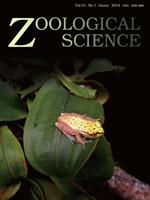Human and livestock related disturbances of habitat selection by ungulates are topics of global concern, as they have profound impacts on ungulate survival, population density, fitness, and management; however, differences in ungulate habitat use under different human and livestock densities are not fully understood. Mongolian gazelle (Procapra gutturosa), an endemic ungulate species on the Asia-European steppe, faces varying intensities of human and livestock disturbances in the area around Dalai Lake, China. To investigate how habitat selection strategies vary as disturbance intensity changes, we randomly set 20 transects containing 1486 plots, on which we conducted repeated surveys of 21 ecological factors during the winters in the period of 2005–2008. We aimed to: 1) determine the critical factors underlying habitat selection of the gazelles; 2) determine the gazelles' habitat preferences in this area; 3) determine how habitat selection varies with disturbance intensity and explore the primary underlying mechanism. We used binary-logistic regressions and information theoretic approaches to build best-fit habitat selection models, and calculated resource selection functions. Sixty-six herds, 522 individuals, and 499 tracks were recorded. Our results indicate that snow depth and aboveground biomass are the main factors affecting habitat selection by Mongolian gazelle throughout the district in winter. Thin snow cover and abundant aboveground biomass are preferred. Avoiding disturbance was the primary factor accounting for habitat selection in low disturbance areas, although with increasing human or live-stock-related disturbance, gazelle maintained a reduced distance to the source of the disturbance. Presumably owing to that shift, movement costs were more important as disturbance increased. In addition, Mongolian gazelle selected habitats based on topographical features promoting greater visibility where disturbance was lower. We suggest several management implications of our findings for this ungulate species will contribute to the effective conservation of Mongolian gazelle in the Dalai Lake area.
How to translate text using browser tools
1 January 2014
Influences of Human and Livestock Density on Winter Habitat Selection of Mongolian Gazelle (Procapra gutturosa)
Zhenhua Luo,
Bingwan Liu,
Songtao Liu,
Zhigang Jiang,
Richard S. Halbrook
ACCESS THE FULL ARTICLE

Zoological Science
Vol. 31 • No. 1
January 2014
Vol. 31 • No. 1
January 2014
Dalai Lake
habitat selection
human disturbance
information theoretic approach
Mongolian gazelle
Procapra gutturosa




